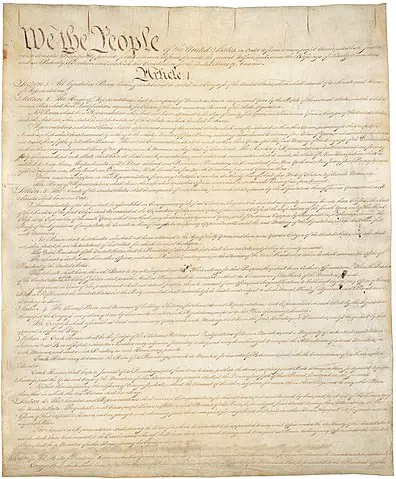The Constitution
The Constitution of the United States was created as a framework for the United States federal government. It is considered to be the country’s highest form of law.
The Constitution establishes the creation of the branches of government and the individual powers that they have to govern.
While the Constitution protects the citizens, it is the various amendments to the Constitution that have been added that help to guarantee basic rights.

When the founders met, they created the first Constitution and called it the Articles of Confederation. They ratified it in 1781 but recognized that there were still problems. One of the biggest issues was that the government didn’t have any money, and the Articles didn’t offer a way to get funds.
This was a big problem because those serving in the Continental Army were deserting because they weren’t getting paid. The new country also had other bills as they owed money to foreign countries. These and other problems meant that they had to create a new constitution.
There was a new meeting of the Constitutional Convention in 1787 so that the state representatives could talk about the changes that were needed.
As with any time, many had differing opinions, and some of the discussions were held in private so that each of the representatives could express their ideas freely.
Those in attendance pretty much agreed that the purpose of the Constitution was to create a government that had enough power to run the country but would not overrun individual state’s rights or the rights of the people.
They also held a concern that any group involved should not have complete power and that there needed to be a balance of power. James Madison is credited for being the “Father of the Constitution” because many of his ideas were incorporated into the document.
They created the three branches of government so that there would be a balance: the Executive Branch, the Legislative, and the Judicial.
However, it is here that they came upon two differing ideas for the Constitution. James Madison wrote the Virginia Plan that was closer to what the larger states wanted. This plan indicated that the number of Congressional representatives should be based on the population of the state.
William Patterson wrote the New Jersey Plan, and it was what the smaller states wanted. This plan indicated that each state should have the same/equal number of representatives.
As with much of what happens in politics, both sides had to come to an agreement, and this was called The Great Compromise. This enabled the number of representatives to the House to be based on the population of the state, and each state would have two representatives sent to the Senate.
The representatives agreed on seven articles of the Constitution:
- Legislative Power
- Executive Power
- Judicial Power
- States’ Powers and Limits
- Amendments
- Federal Power
- Ratification
They set up the rule that for the Constitution to become law, at least nine of the thirteen states were required to ratify it. Delaware was the first state for ratification in 1787, and the last state was Rhode Island in 1790.
Some of the representatives didn’t sign the Constitution because it didn’t include the Bill of Rights. James Madison created the Bill of Rights, which are the first ten amendments to the Constitution. The Bill of Rights guarantees liberties and civil rights to the people including freedoms such as free speech, press, and religion. It also sets rules down for the duel process of law as well as reserving all powers that aren’t delegated to the Federal Government to the people of the States. It specifically indicates that “the enumeration in the Constitution, of certain rights, shall not be construed to deny or disparage others retained by the people.”
There are currently 27 amendments to the Constitution.
Q&A:
What are the seven articles to the Constitution?
Legislative Power
Executive Power
Judicial Power
States’ Powers and Limits
Amendments
Federal Power
Ratification
At present, how many amendments does the Constitution have?
27
What major problem did the original Articles of Confederation have?
No legal way for the government to have money to pay soldiers or other bills>
What were the names of the two ideas for state representation in government?
The New Jersey Plan and the Virginia Plan
How many of the 13 states had to ratify before the Constitution could be considered law?
9
Why is James Madison considered to be the Father of the Constitution?
Because so many of his ideas are included in it



